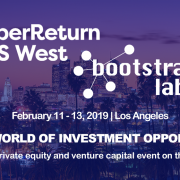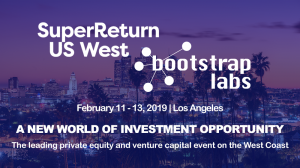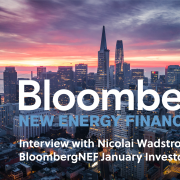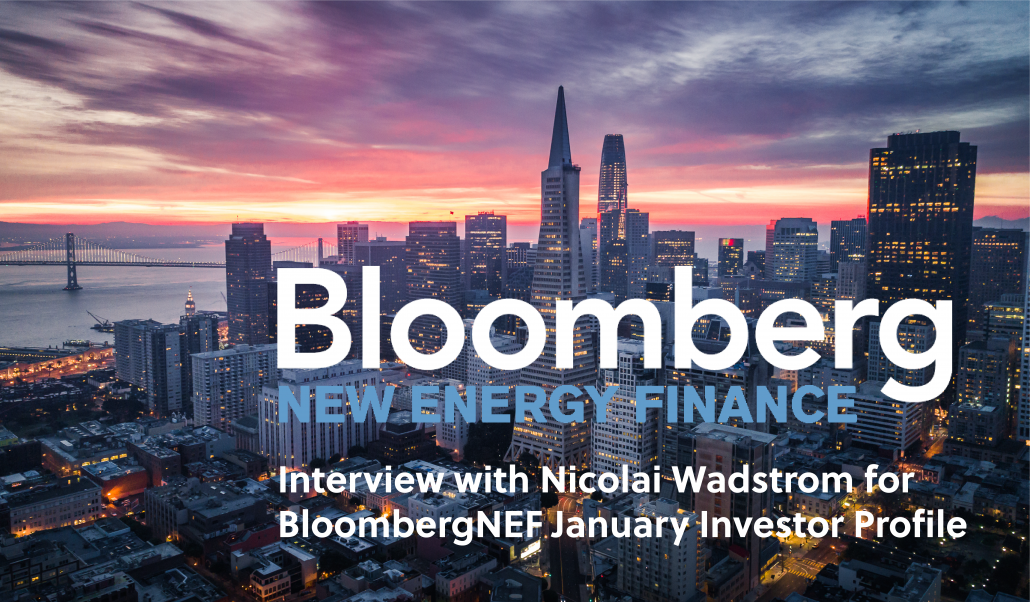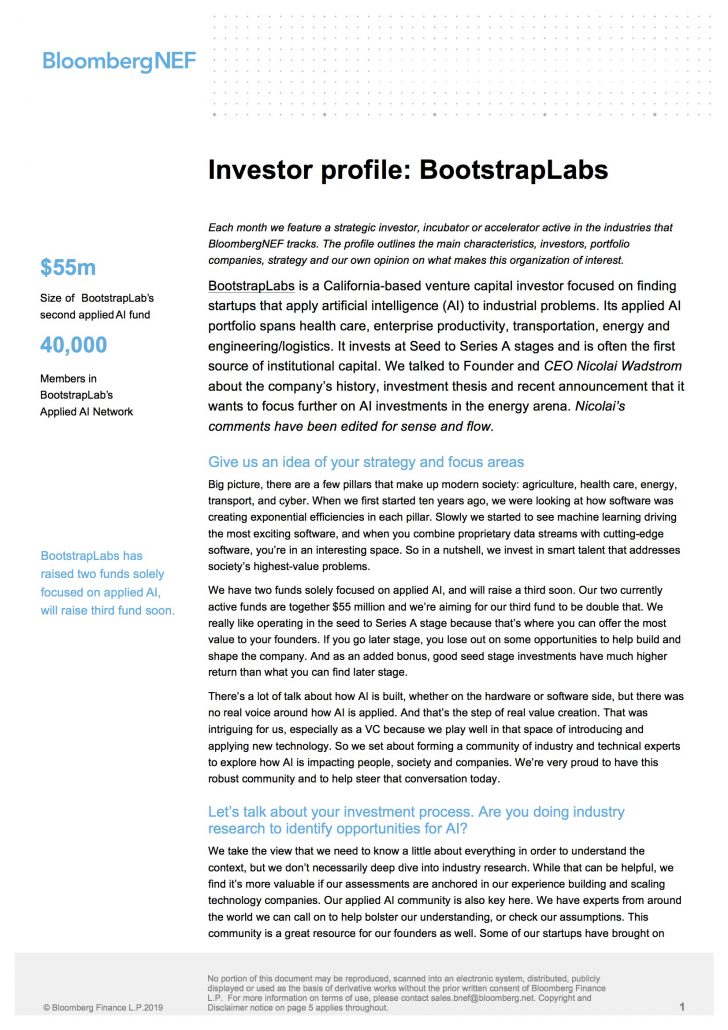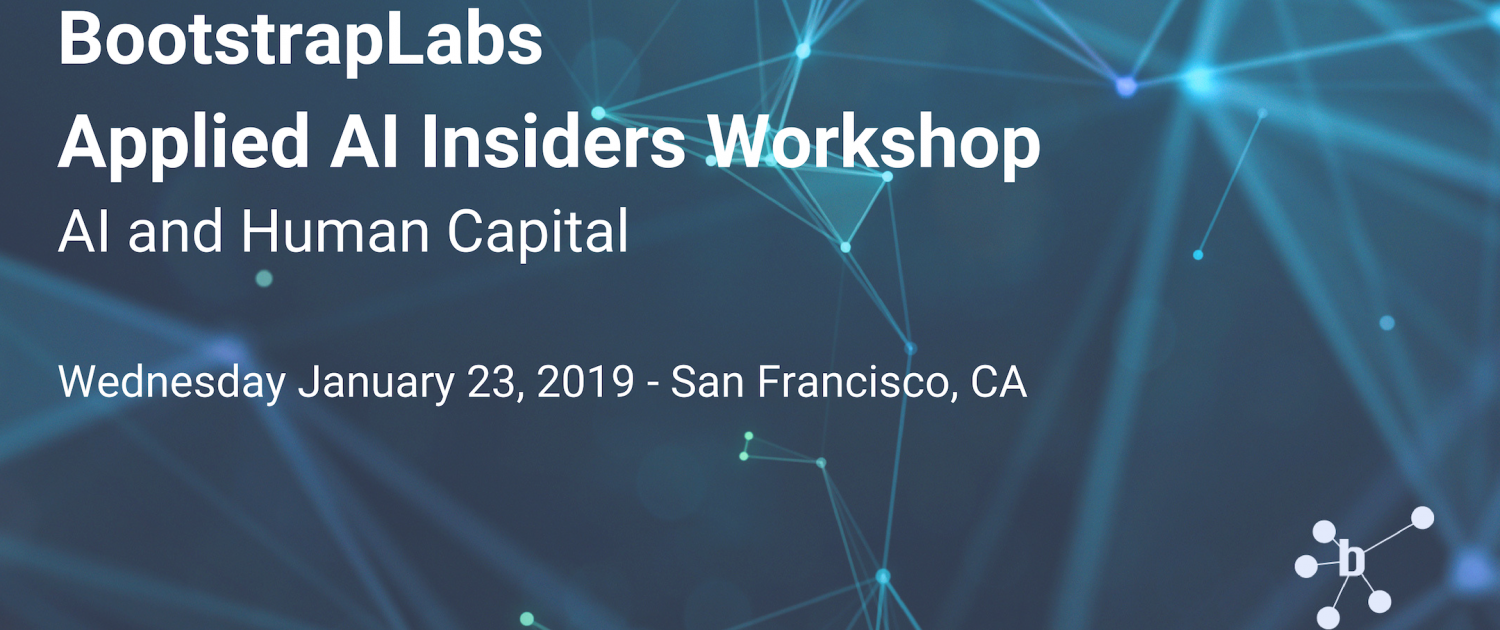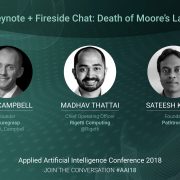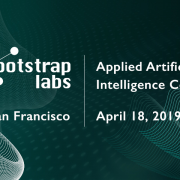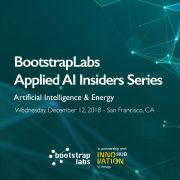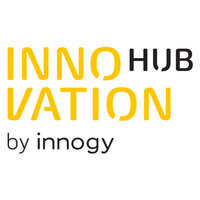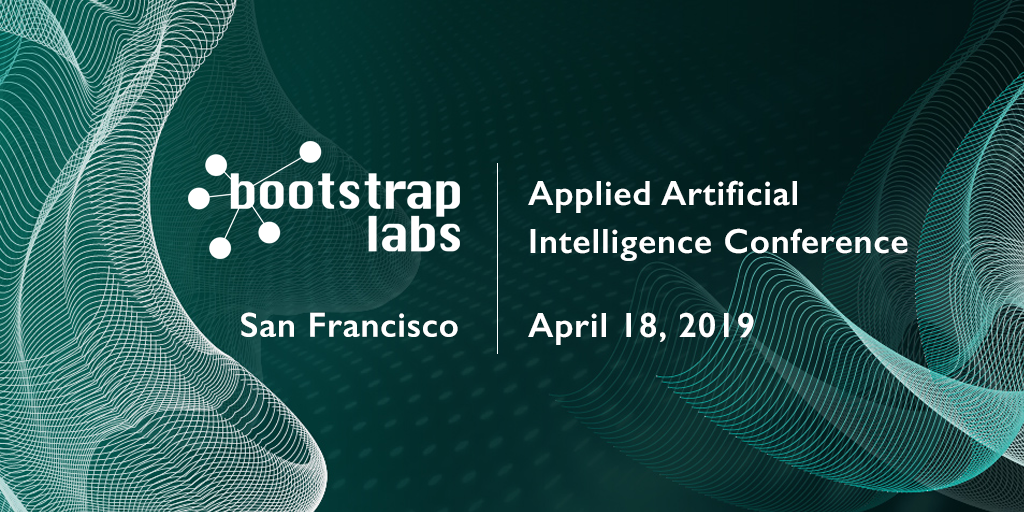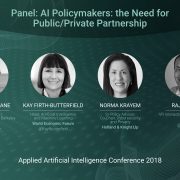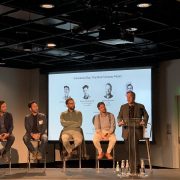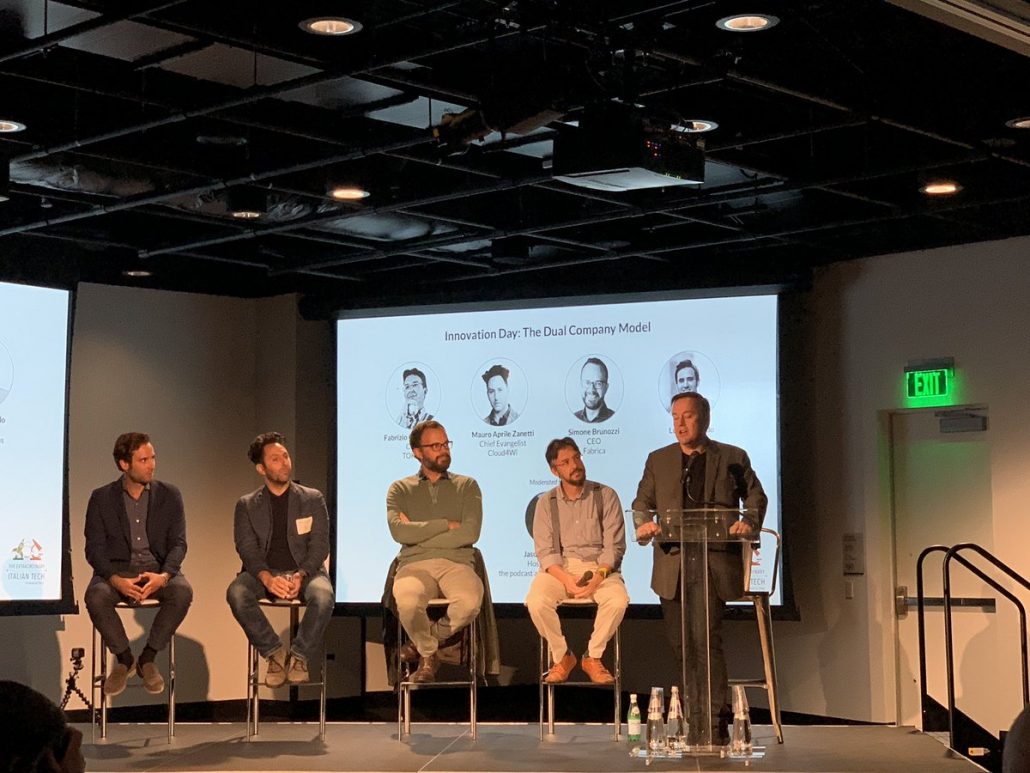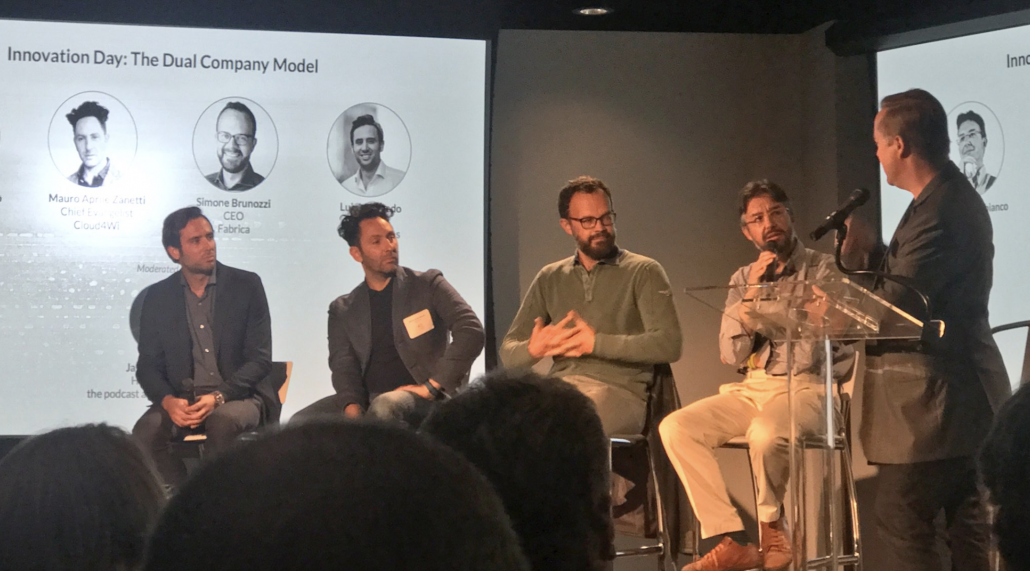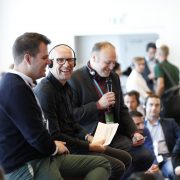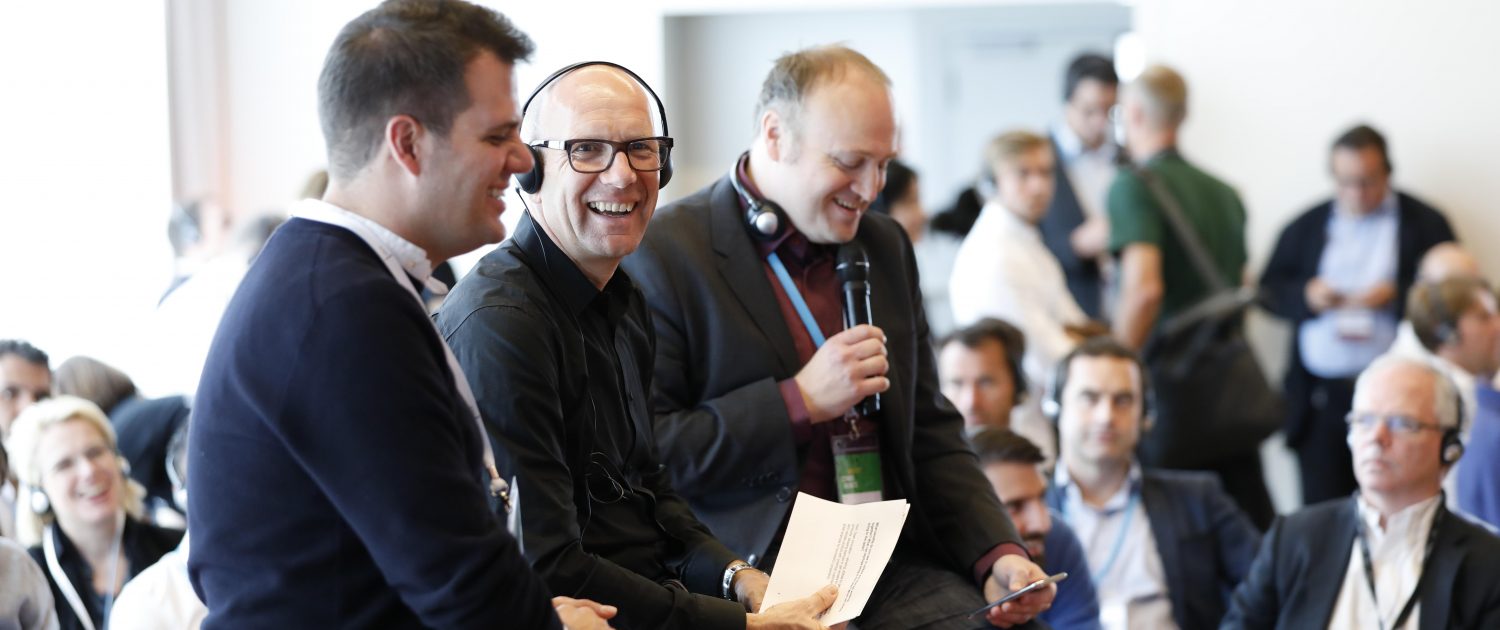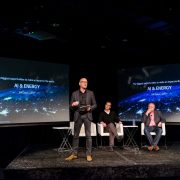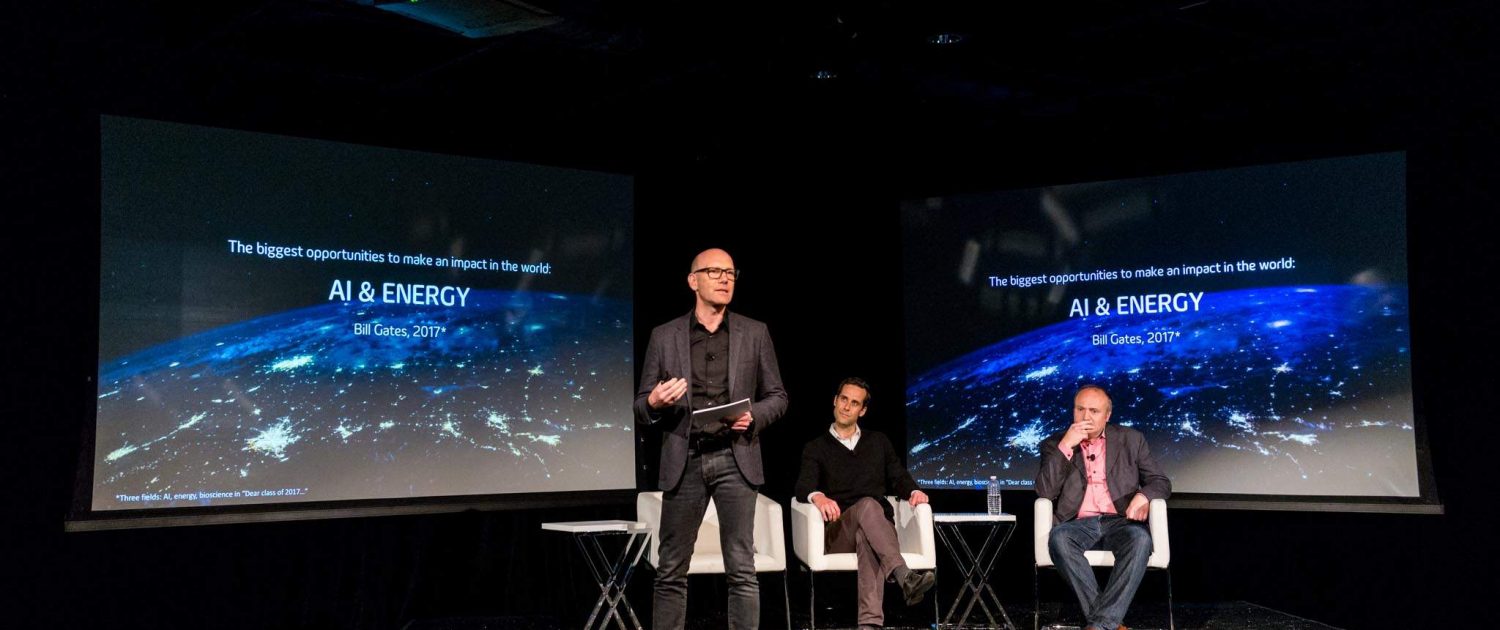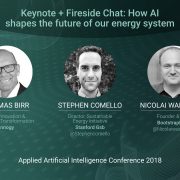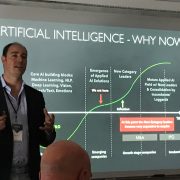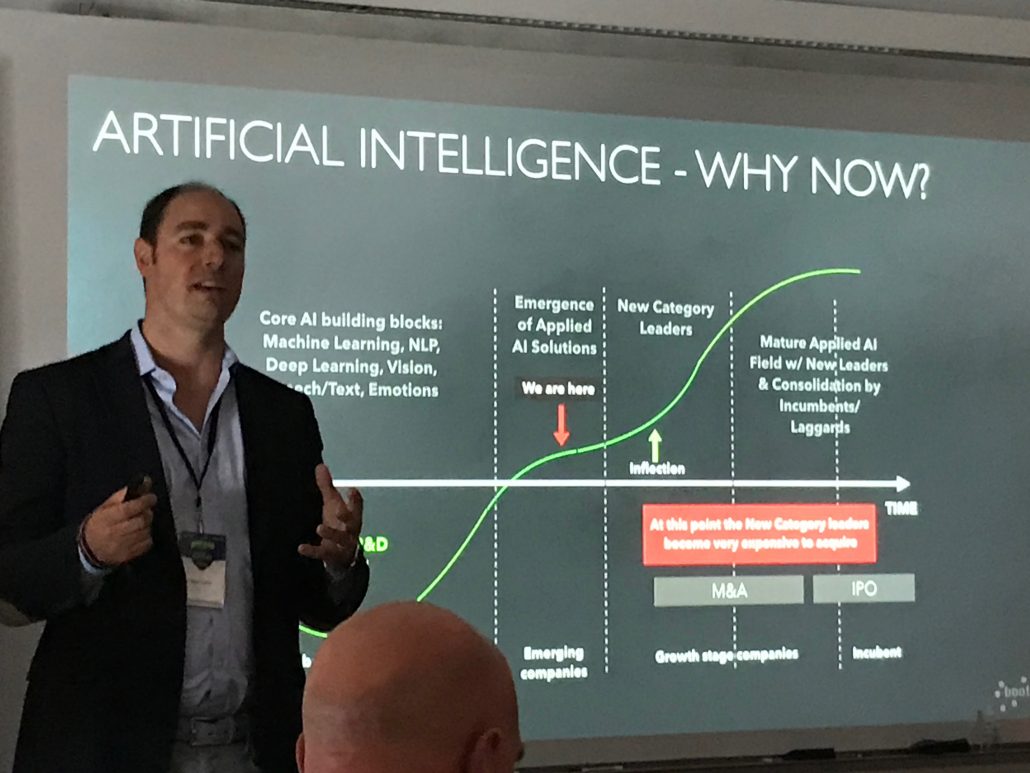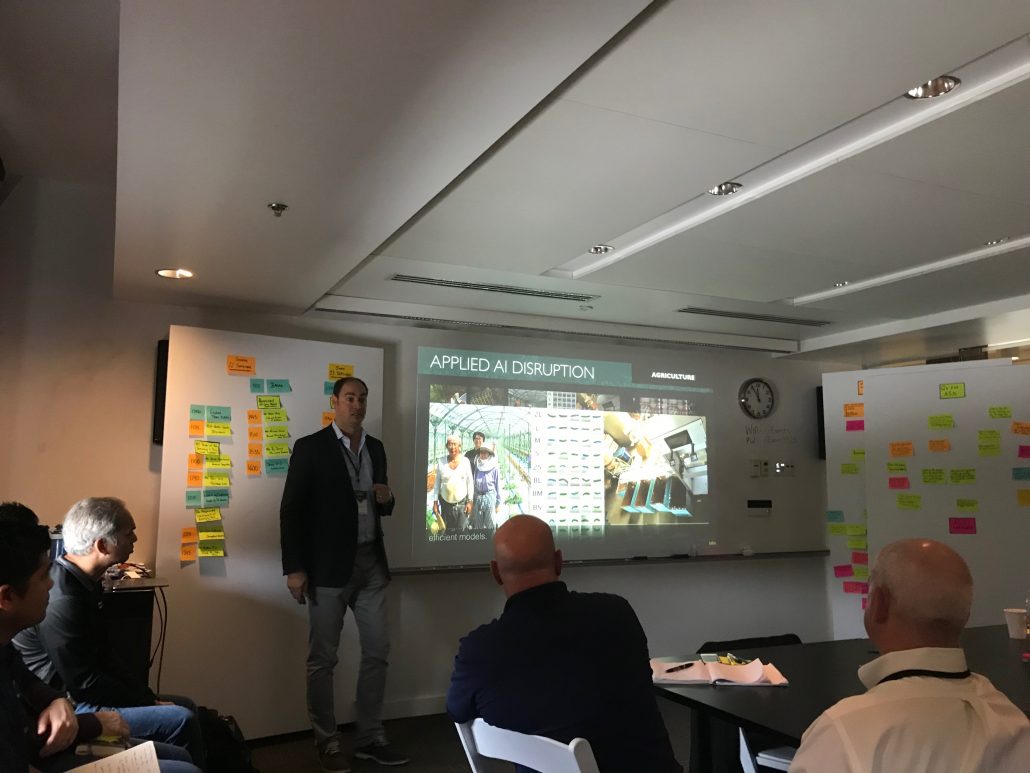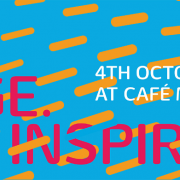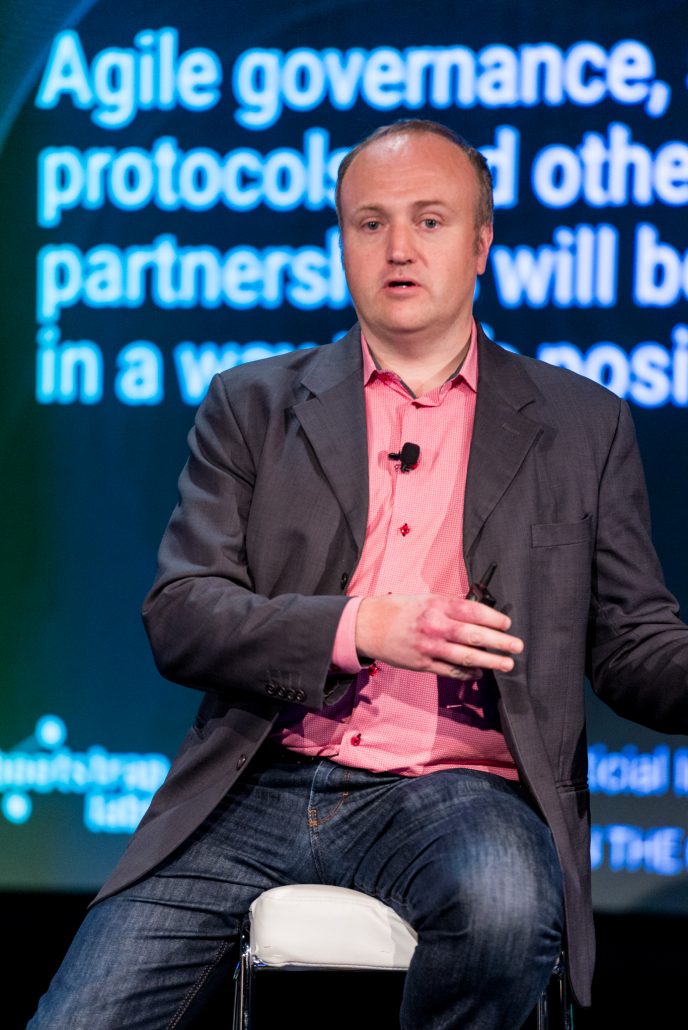Authors
Thomas A. Campbell, PhD – Founder & President, FutureGrasp™, LLC[1] and Special Advisor, BootstrapLabs
Nicolai Wadstrom – CEO and Founder, BootstrapLabs

The Dream
Driving used to be a pleasure: the open road, Sunday drives, cruising on Main Street. Now it is more of a chore: traffic jams, road rage, avoiding distracted drivers. While in the last few years we have advanced with capabilities such as Waze and Google Maps in our unending quest to dodge traffic and still make it home in time for a hot dinner, the thrill of being in the driver’s seat is waning.
Moreover, there are few things that we spend more time doing than commuting. “New survey data show the average American’s commute inched up to 26.9 minutes from 26.6 minutes the previous year [based on a one-way commute], according to the U.S. Census Bureau’s 2017 American Community Survey.”[2] US cities with the worst traffic have more than 40 minute one-way commutes.[3] Thus, many commuters spend more than an hour of every workday just driving; our time is being consumed by this stressful and unproductive activity.
Finally, polluting cars are a significant source of carbon dioxide (CO2) emissions, a major contributor to climate change.[4] “EIA [Energy Information Administration] estimates that U.S. motor gasoline and diesel (distillate) fuel consumption for transportation in 2016 resulted in the emission of about 1,102 million metric tons of CO2 and 437 million metric tons of CO2, respectively, for a total of 1,540 million metric tons of CO2. This total was equal to 82% of total U.S. transportation sector CO2 emissions and equal to 30% of total U.S. energy-related CO2 emissions in 2016.”[5] Clearly, this is unsustainable.
So what might we do to realize the dual dreams of hassle-free, environmentally-friendly driving? One approach is to make our vehicles autonomous…to empower the car to do the thinking instead of the driver, and thus free us to do things other than focus on that next stop sign. Moreover, making autonomous vehicles (AVs) become electric vehicles (EVs) could be an even further victory for our environment.[6] This vision is being aggressively pursued by many companies and researchers; unfortunately, reality imposes several technical challenges.
Reality & Challenges
Autonomous vehicles have been considered possible with the right technology aids almost since the first mass assembly car was manufactured.[7] However, only in the last decade have AVs been taken seriously with recent advances in computation and sensors. Perhaps starting with Google’s initially secret Waymo project – itself stemming from Larry Page’s undergraduate vision of being chauffeured around Stanford University campus autonomously – AVs have started to gain traction.[8] Nevertheless, there remain many fundamental challenges, both technical- and policy-related, before we can take our eyes off the road. The one we’d like to focus upon in this note is the need for power.
A few years ago, the only EV many Americans had ever seen was a golf cart.[9] Surprisingly, several of the first automobiles were all-electric in the late 1800s. Popular in cities (where one could get electricity), EVs fell out of favor with the introduction of the mass-produced Ford Model T car, followed by the discovery in the United States of cheap Texas crude oil. EVs all but disappeared by 1935.[10]
With advances in technology – especially batteries that offer range up to 300 miles on one charge – EVs have experienced a resurgence in popularity. “Today, there are 23 plug-in electric and 36 hybrid models available in a variety sizes.”[10] The United States just exceeded one million EVs on the road.[11] [12] One of the leading companies developing EVs is Elon Musk’s Tesla. The Tesla Model 3 and its other brands are wonders of technology.[13] However, despite full touch-screen for nearly all its controls and many other technology perks,[14] Tesla cars would be just hunks of metal without power, as well as the computers for autonomous controls.
Power (Batteries vs. Fuel Cells)
Batteries have come a long way since Nikola Tesla himself did fundamental research on them in the late 1800s. Current go-to materials for EV power storage batteries include exotic compounds and elements such as nickel-cadmium, nickel-metal hydride, and lithium. “Lithium-ion (Li-ion) and Lithium-Iron-Phosphate (LiFePO4) cells have so far provided the biggest boost in energy density, between 300% and 400% more energy-dense than LA [lead-acid] batteries. Nissan Leaf, all Tesla vehicles, and most other electric cars and hybrid electric cars use Li-ion battery packs, though a few hybrid and electric car startups are toying with LiFePO4 chemistry.”[15]
Despite the popularity of Li-ion batteries, a lingering technical challenge is their long charge time and power required for each charge. A full-day charge for a Tesla Li-ion battery pack takes several hours and consumes about 2,500 Watts.[16] People who don’t have access to a charger at work typically charge their Tesla batteries overnight at home. Charging EVs puts a new strain on electrical grids.
Another option for powering EVs is the fuel cell, which has been around for decades.[17] “Like a battery, a fuel cell harnesses a chemical reaction to produce energy in the form of electricity. More specifically, hydrogen fuel cells generate electricity, water and heat from hydrogen and oxygen.”[18] A fundamental issue with hydrogen fuel cells is the storage of the hydrogen in the car before its use; one wants to have as much hydrogen as possible on-board in some compressed form to ensure long mileage. Simple hydrogen liquefication doesn’t go far enough; one must resort to trapping the H2 molecules inside or with other solid materials and then enabling their easy release.[19] Nanomaterials encapsulating or bonded to H2 have been researched for several years to do that.[20] Carbon buckyballs, nanotubes and other exotic molecular shapes have all been considered for their ability to store H2 and release it when needed. e.g., [21][22][23]
Despite their comparative environmental friendliness (hydrogen fuel cells emit only water vapor and warm air), fuel cells still have a ways to go before they can, if ever, usurp the efficiency and cost-effectiveness of batteries. “Hydrogen fuel cells offer a potentially very clean, energy dense and easy to recharge energy source for vehicles and other systems, but they are currently complicated, expensive and dangerous to operate. In comparison, lithium-ion batteries, although less energy dense and slower to recharge, are as clean, much cheaper, easier and safer to handle.”[18] Although a few models of automobile EVs powered by hydrogen fuel cells have been manufactured, they have not received wide adoption. Some fleets of buses, as well as forklifts, use hydrogen fuel cells. Wider adoption will require not only major advances in H2 storage capabilities, but also a substantially expanded fleet of charging stations dispersed across the United States.[24] For the next several years, we will most probably see hydrogen fuel cells in only limited use within EVs.
Sensors and Computation
One doesn’t realize it after some experience, but the action of driving actually requires substantial attention and skill. Distracted driving (whether via texting, taking a phone call, or drunk driving) is well-documented to cause accidents.[25] Clearly, computers don’t have the social or biological needs that humans do, but ultimately AV systems still have several significant technical specifications for sensors and computation – a few examples include:[26]
- High-resolution, 3D maps. When driving, one needs to know where one is going. While humans can look at maps and easily adjust to changing driving conditions, such actions are not trivial for an AV. “Self-driving cars currently lack the common sense needed to navigate using a traditional human map. Since they can’t interpret context, they need to rely on a map signal that doesn’t cut out in tunnels, waver in precision or fall out of date…these machine maps must meet several key demands:
- Incredible precision, so the car can compensate for its lack of understanding context and know where it is within 10 cm.
- Granular instructions, like which lane the car is in, the traffic rules that apply to that lane, and even overhead clearances and road elevation.
- Constant connection, which continues to provide information even when GPS signals are weak or missing.”[27]
- Advanced sensors systems – increasingly prototypes incorporate LiDAR, Radar and other sensor systems that compensate for the AV systems lack of ability in some areas, but also add capabilities beyond human drivers. BootstrapLabs’ portfolio company AEye is an example of such a technology.[28]
- Data processing. AVs place incredible demands on the volume of data needed to be processed rapidly. 5G or faster wireless speeds are said to be required. “When it comes to autonomous vehicles, the speeds and data processing capabilities needed to mimic the timing of human reflexes are incredible. Dr. Joy Laskar, co-founder and CTO of Maja Systems, believes the future self-driving car will generate approximately two petabits of data—the equivalent of two-million gigabits.”[29]
- Object identification. Is that a bicycle or a deer ahead? While easy for a human to discern objects, AVs have troubles. One of the grand challenges with AVs is that objects on the road are in motion—by themselves and/or relative to the AV itself. Thus, AVs must not only process static images, but also moving video data. Some researchers are resorting to infrared cameras to ensure object visualization and identification, even in the worst conditions.[30]
- Varying weather conditions. Whether you live in the mountains or on a beach, the weather can change quickly. Sensors must be able to accommodate the full spectrum of ambient conditions, including sun, rain, hail, snow, fog, ice and winds. Unfortunately, designing sensing capabilities that cover the full meteorological spectrum is challenging. “After years of testing, with hundreds of cars and vans deployed on public streets and private facilities, even the best autonomous-driving efforts still struggle with inclement weather…At the moment, autonomous cars rely on a patchwork of sensors: GPS, traditional cameras, radar, and lidar technology that bounces lasers off nearby cars and pedestrians. Mother Nature essentially sidelines two of those four applications: cameras are useless in fog and heavy snow, and lidar lasers careen wildly off raindrops and snowflakes. The remaining systems also have major deficiencies. GPS connections can be slow and spotty, and radar is lousy at distinguishing obstacles—is that a pedestrian or a seagull?”[31] New technologies and software are needed to ensure our trips aren’t limited by changing weather.
Opportunities for Applied Artificial Intelligence (AI)
The various challenges described above present unique opportunities, as well as the basic necessity, for Applied AI. As noted in a previous note from BootstrapLabs and FutureGrasp™, LLC,[32] AI can be leveraged positively for energy utilities. Similar thoughts apply in the context of EVs. Let’s review briefly how Applied AI can help us realize the dream of electrically powering AVs:
Advanced materials research. Over a hundred years ago, Thomas Alva Edison used a purely empirical approach to narrow his choice of a filament material for the first sustained light bulb. Later as computers became available, the ability to not only record data, but also to simulate how a material would behave with a given set of material properties and desired results became possible. Now with Applied AI we can take modeling advanced materials to a new level. Companies such as Citrine Informatics leverage AI and big data analytics to go way beyond the Edisonian approach. “Our platform ingests and analyzes vast quantities of technical data on materials, chemicals, and devices to streamline R&D, manufacturing, and supply chain operations for any organization that produces a physical product.”[33] Such AI-driven research can accelerate the development of new batteries and fuel cells. Instead of empirically assessing millions of compounds or spending countless hours programming and running simulations, AI can cut the time and budget spent on finding new advanced materials. Companies such as Toyota[34] and Tawaki,[35] as well as US Government efforts such as DARPA’s Make-It program[36] are using AI to tease out from Mother Nature new synthetic molecules that could be used in next-generation battery and fuel cell technologies.
Optimizing AV Performance. The aforementioned set of sensing and computation challenges for AVs all have two major issues in common: data and its processing. The sheer amount of data that a single AV accumulates on the road is astounding. “A single autonomous test vehicle produces about 30 TB per day, which is 3,000 times the scope of Twitter’s daily data.”[37] This volume of data overwhelms CPUs[38] or other lesser chips. On-edge computing (where the compute is done at the site of data generation) is also paramount as one would certainly prefer not to have loss of WiFi result in a sudden loss of computation and AV control. AI can assist with both these issues. Large data processing using AI with on-board GPU[39] packs is becoming now the go-to solution for AVs.[40][41]
Fulfilling the Dream
Autonomous vehicles powered by electricity require that AI move out of university and industry labs and into the real world—that it is actually “applied.” One means of making that happen is through the creation of start-ups that have a vision of changing the world. BootstrapLabs, a venture capital group in San Francisco, recognizes that challenge and invests in founders that dream big and are solving today’s hardest problems by applying AI to shape a better future.
Across the spectrum of challenges within AVs and EVs, applied AI has the potential to help resolve thorny problems, whether they be in discovering the next-generation advanced material for batteries or fuel cells, or in optimizing datasets and their processing. Achieving the dream of powering AVs will require capabilities beyond what a human or even big data analytics can accomplish. Ultimately, AI can help us make driving a pleasure again.
Notes (all web links accessed November 2018)
[1] FutureGrasp™, LLC, https://www.futuregrasp.com/
[2] G. Salvidia, “Stuck In Traffic? You’re Not Alone. New Data Show American Commute Times Are Longer,” September 20, 2018, NPR, https://www.npr.org/2018/09/20/650061560/stuck-in-traffic-youre-not-alone-new-data-show-american-commute-times-are-longer
[3] “These 25 cities have the worst commutes in America,” October 16, 2018, https://www.nwitimes.com/jobs/these-cities-have-the-worst-commutes-in-america/collection_2745a1a9-6757-59f3-a864-fd4a44cd212a.html#3
[4] Intergovernmental Panel on Climate Change, “Global Warming of 1.5°C,” http://www.ipcc.ch/report/sr15/
[5] U.S. Energy Information Association, Frequently Asked Questions, https://www.eia.gov/tools/faqs/faq.php?id=307&t=10
[6] Of course, a debate rages about whether EVs are actually more environmental than cars with combustion engines. Electricity doesn’t just magically appear – it has to come from somewhere, and those energy sources themselves may be big polluters. One must crawl down the whole electron chain to learn whether the local energy utility is primarily burning fossil fuels or using renewable energy sources.
[7] L. Dormehl, S. Edelstein, October 28, 2018, “Sit back, relax, and enjoy a ride through the history of self-driving cars,” Digital Trends, https://www.digitaltrends.com/cars/history-of-self-driving-cars-milestones/
[8] No pun intended
[9] Golf carts typically have speed-limit governors on them, as one author [TAC] experienced when he caddied in his teenage years. Some friends of his learned the hard way that disabling the governor still doesn’t give a cart enough power to jump a creek.
[10] “The History of the Electric Car,” September 15, 2014, Department of Energy, https://www.energy.gov/articles/history-electric-car
[11] M. Joselow, “The U.S. Has 1 Million Electric Vehicles, but Does It Matter?,” October 12, 2018, https://www.scientificamerican.com/article/the-u-s-has-1-million-electric-vehicles-but-does-it-matter/?utm_source=newsletter&utm_medium=email&utm_campaign=tech&utm_content=link&utm_term=2018-10-23_more-stories&spMailingID=57626706&spUserID=MTExNTAyMjAzODk1S0&spJobID=1503280707&spReportId=MTUwMzI4MDcwNwS2
[12] Although one million vehicles still only represents less than one percent of all wheels on roads in the United States
[13] Tesla, https://www.tesla.com/
[14] Including its 2017 Easter Egg of a software upgrade: ‘Ludicrous Mode,’ providing 0-60 mph in under 2.3 seconds
[15] Chilton, “A Short History of Electric Car Batteries,” http://blog.chiltondiymanuals.com/short-history-electric-car-batteries/
[16] Energy Sage, “Tesla Model S and Model X charging: everything you need to know,” March 27, 2018, https://www.energysage.com/electric-vehicles/charging-your-ev/charging-a-tesla/
[17] One author [TAC] saw a prototype hydrogen fuel cell car at General Motors (GM) in 1990 during his mechanical engineering summer internship there. Sadly, the vehicle never made it off the research floor.
[18] E. Wertheimer, “Hydrogen Fuel Cells vs Lithium-ion Batteries in Electric Vehicles,” June 20, 2018, Furo Systems, https://www.furosystems.com/news/hydrogen-fuel-cells-vs-lithium-ion-batteries-in-electric-vehicles/
[19] Department of Energy, “Hydrogen Storage – Basics,” https://www.energy.gov/eere/fuelcells/hydrogen-storage-basics-0
[20] “Basic Research Needs for the Hydrogen Economy,” May 13-15, 2003, https://science.energy.gov/~/media/bes/pdf/reports/files/Basic_Research_Needs_for_the_Hydrogen_Economy_rpt.pdf
[21] E. Erünal, F. Ulusal, M.Y. Aslan, B. Güzel, D. Üner, “Enhancement of hydrogen storage capacity of multi-walled carbon nanotubes with palladium doping prepared through supercritical CO2 deposition method,” International Journal of Hydrogen Energy, 43 (23), June 7, 2018, 10755-10764, https://www.sciencedirect.com/science/article/pii/S0360319917346967
[22] T. Liu, “Buckyball’s Hydrogen Spillover Effect at Ambient Temperature Observed Experimentally for the First Time,” March 26, 2018, Chemical Communications Blog, http://blogs.rsc.org/cc/2018/03/26/buckyballs-hydrogen-spillover-effect-at-ambient-temperature-observed-experimentally-for-the-first-time/
[23] Y. Liu, et al., “Metal-assisted hydrogen storage on Pt-decorated single-walled carbon nanohorns,” 50 (13), November 2012, 4953-4964, https://www.sciencedirect.com/science/article/pii/S0008622312005349
[24] Wikipedia, “Fuel Cell Vehicle: Buses,” https://en.wikipedia.org/wiki/Fuel_cell_vehicle#Buses
[25] National Safety Council, “Distracted Driving Research, Infographics,” https://www.nsc.org/road-safety/safety-topics/distracted-driving/research
[26] A. Marshall, “After Peak Hype, Self-Driving Cars Enter The Trough Of Disillusionment,” December 29, 2017, WIRED, https://www.wired.com/story/self-driving-cars-challenges/
[27] N. Garg, “Self-driving cars need a new kind of map,” https://www.axios.com/self-driving-cars-need-a-new-kind-of-map-df0b7e69-e0fb-4a8e-a865-24bc96708103.html
[28] AEYE, https://www.aeye.ai/
[29] B. Khosravi, “Autonomous Cars Won’t Work – Until We Have 5G,” March 25, 2018, Forbes, https://www.forbes.com/sites/bijankhosravi/2018/03/25/autonomous-cars-wont-work-until-we-have-5g/#614ff971437e
[30] N. Pinon, “Next-generation technology is coming to a self-driving car near you,” November 7, 2018, PhysOrg, https://phys.org/news/2018-11-next-generation-technology-self-driving-car.html
[31] K. Stock, “Self-Driving Cars Can Handle Neither Rain nor Sleet nor Snow,” September 17, 2018, Bloomberg Businessweek, https://www.bloomberg.com/news/articles/2018-09-17/self-driving-cars-still-can-t-handle-bad-weather
[32] T. Campbell, N. Wadstrom, (November 26, 2018), “Banish the Darkness with Artificial Intelligence,” BootstrapLabs Blog, https://bootstraplabs.com/blog/2018/11/26/banish-the-darkness-with-artificial-intelligence/
[33] Citrine Informatics, https://citrine.io/
[34] M. Moon, “Toyota is using AI to hunt for new battery materials,” March 30, 2017, https://www.engadget.com/2017/03/30/toyota-research-ai-battery-material-hunt/
[35] Tawaki, “What If Artificial Intelligence Finds New Battery Materials,” June 1, 2017, http://www.tawaki-battery.com/artificial-intelligence-new-battery-materials/
[36] Make It, DARPA, https://www.darpa.mil/program/make-it
[37] J.A. Amend, “Storage Almost Full: Driverless Cars Create Data Crunch,” January 17, 2018, https://www.wardsauto.com/technology/storage-almost-full-driverless-cars-create-data-crunch
[38] Central processing units
[39] Graphics processing units
[40] See for example, NVIDIA’s overview of GPUs in AVs: https://www.nvidia.com/en-us/self-driving-cars/drive-platform/
[41] For an overview of advanced semiconductor technologies relative to AI see: T. Campbell & R. Meagley, Next-Generation Compute Architectures Enabling Artificial Intelligence – Part I of II, 2 FEB 2018, https://www.futuregrasp.com/next-generation-compute-architectures-enabling-artificial-intelligence-part-I-of-II and T. Campbell & R. Meagley, Next-Generation Compute Architectures Enabling Artificial Intelligence – Part II of II, 8 FEB 2018, https://www.futuregrasp.com/next-generation-compute-architectures-enabling-artificial-intelligence-part-II-of-II

